Credit: Brian Gratwicke
Ensatina
Ensatina eschscholtzii
Description
Other names: Oregon Ensatina; Red Salamander; Ensatina eschscholtzii oregonensis
The Ensatina is a lungless, entirely terrestrial species that occurs in North America from British Columbia south to Baja California in Mexico. There are seven recognized subspecies within its range. In British Columbia there is only one subspecies, the Oregon Ensatina. They have a relatively short body. Their total length (including the tail) reaches a maximum of 15 cm. In Canada, they tend to be a uniform brown to pinkish with yellow or brown flecking on the sides. The belly is pinkish and is covered in dark speckling. They can be identified by having 12-13 costal groovesDefinition:Grooves along the sides of a salamander’s body that increase the surface area of the skin and creates channels for water to flow and collect on their body. This is important to prevent their skin from drying out., long legs, and a distinct constriction at the base of the tail.
Listen to the Indigenous words for “salamander” here!

Similar Species
The Ensatina may be easily confused with the Northwestern Salamander, Wandering Salamander, or melanistic versions of the Western Red-backed Salamander. However, all of these species lack a constriction at the base of the tail that is characteristic of the Ensatina. The Northwestern Salamander does not have nasolabial groovesDefinition: Small grooves that extend from the upper lip to the nostril in lungless salamanders. The salamander smells by touching its snout to a surface (nose tapping), allowing odour particles to travel up the groove into sensory cells in the nose., is larger, and has distinct parotid glandsDefinition:An external skin gland on the back, neck, and/or shoulder of some toads, frogs, and salamanders, usually visible as a bump. It can secrete a number of milky alkaloid substances which help deter predators. behind the eyes. Wandering Salamanders has light gray, bronze, or gold mottling and speckles on the back, and have long toes with squared ends. Melanistic Red-backed Salamanders have much smaller legs relative to their bodies.
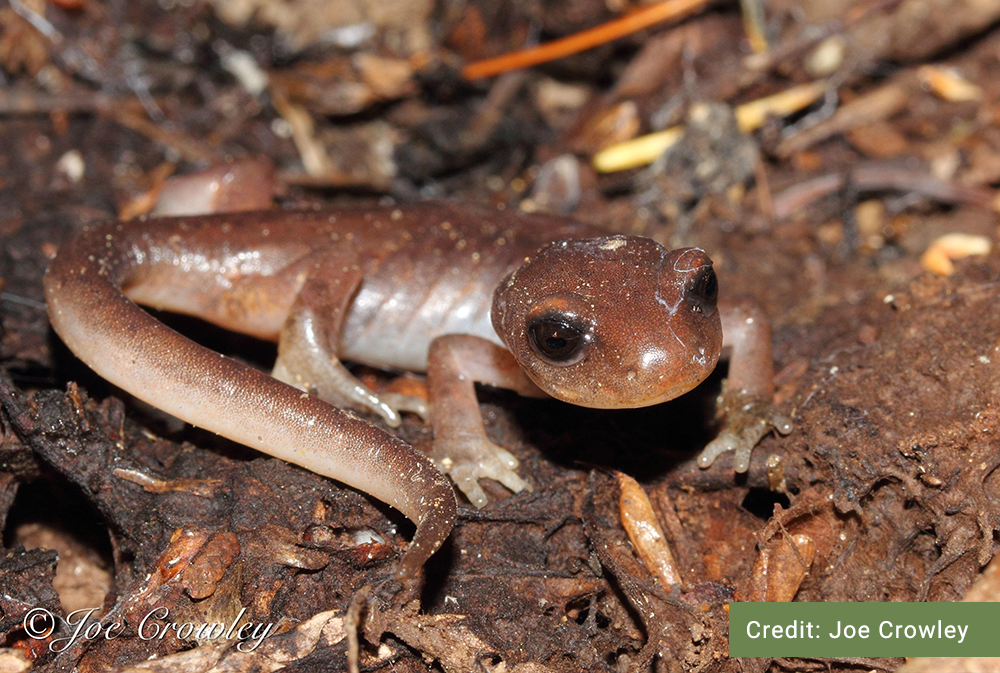
Juvenile Ensatina
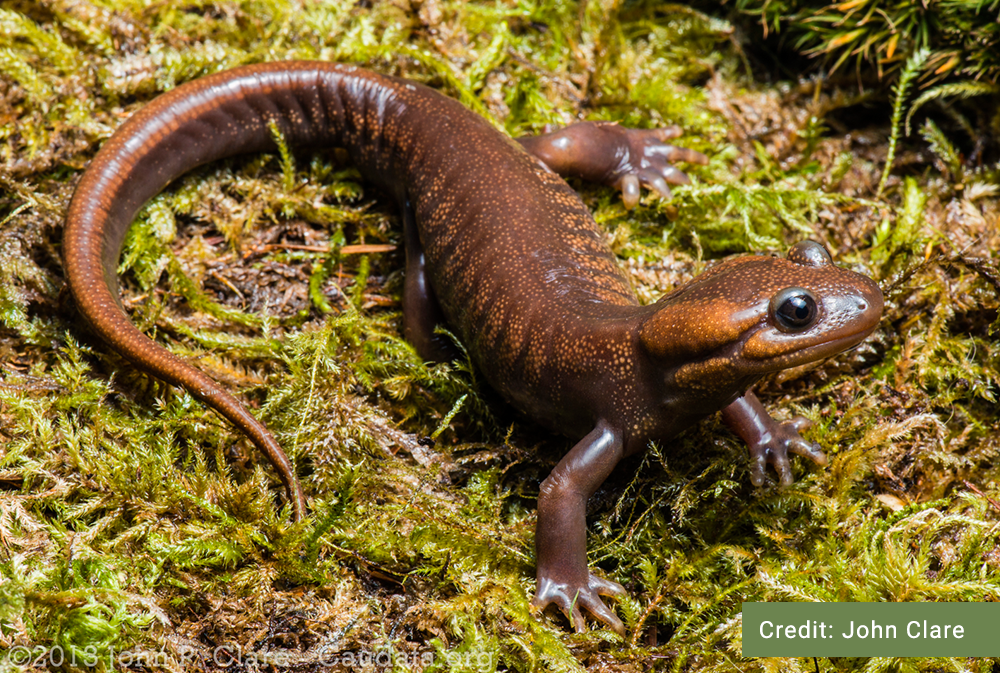
Northwestern Salamander
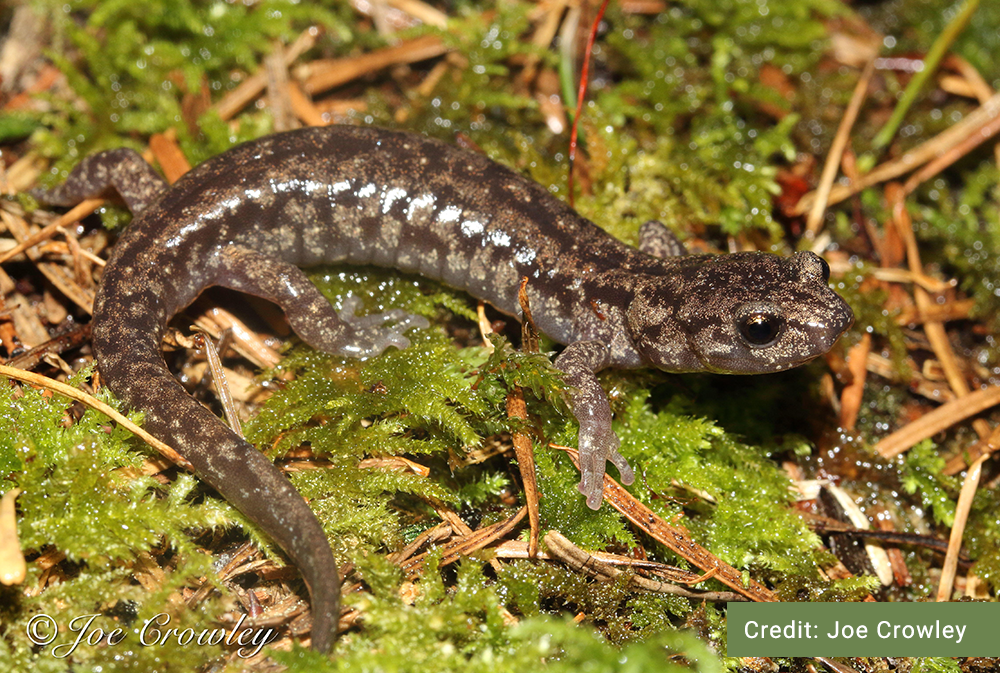
Wandering Salamander
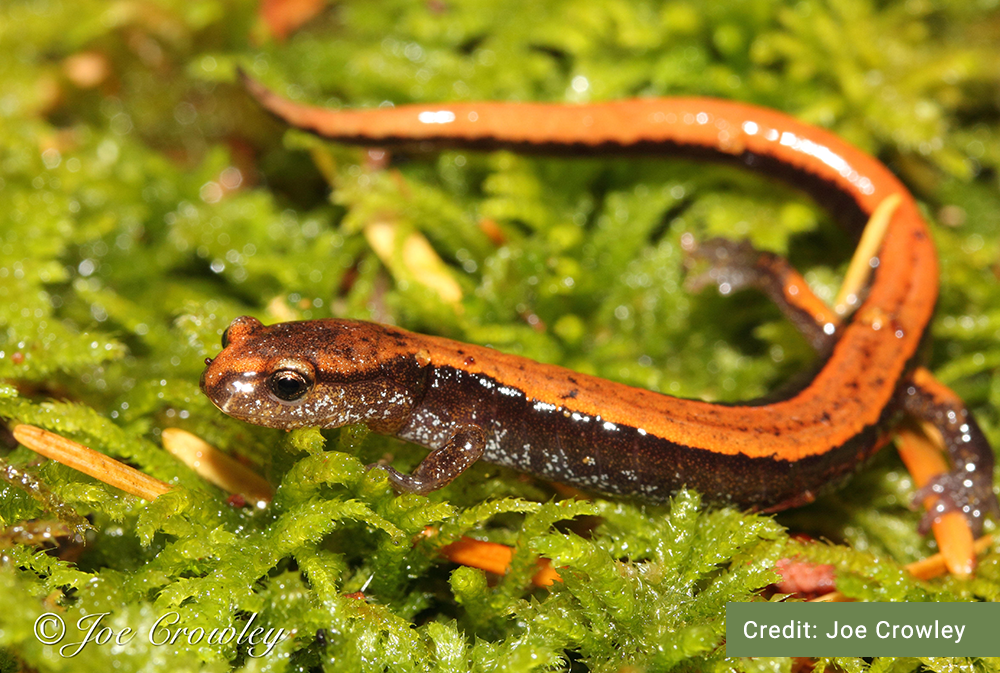
Western Red-backed Salamander
Distribution
Habitat
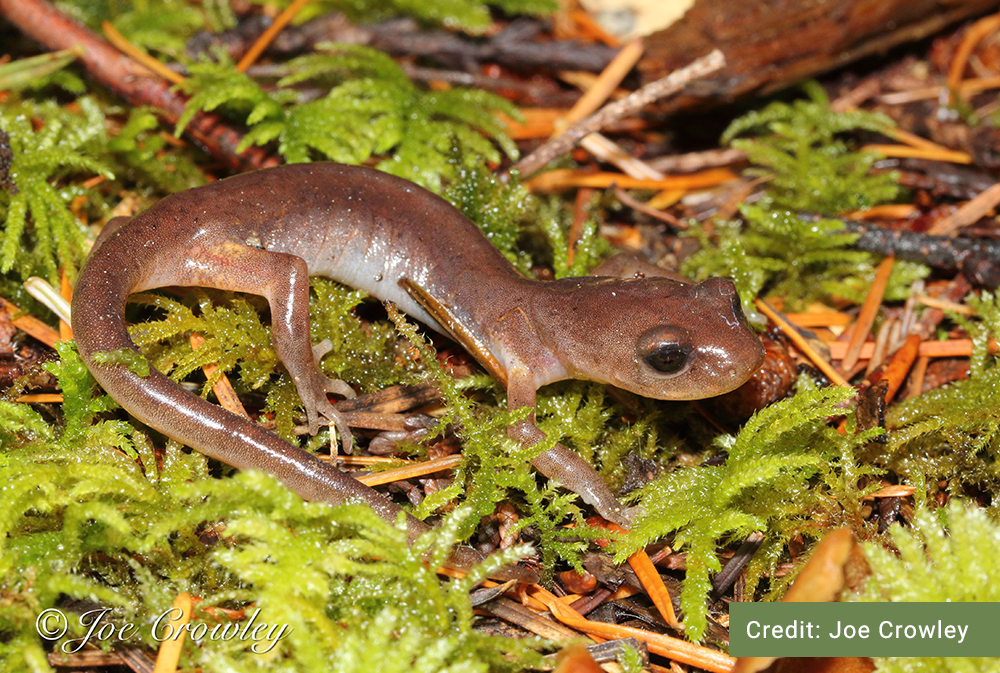
Reproduction
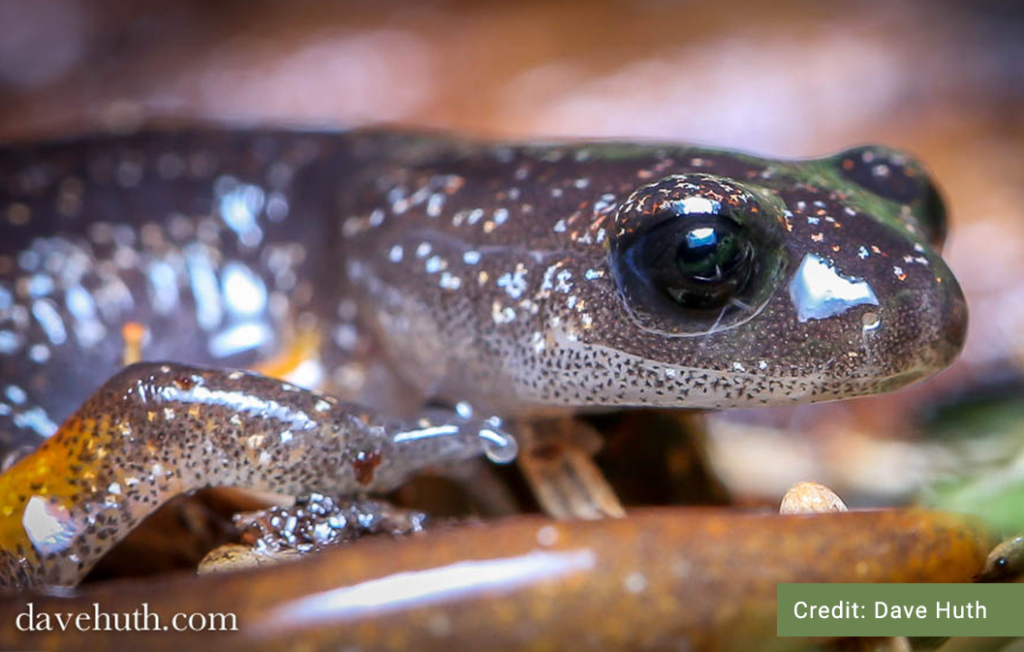
Diet
Conservation Status
Global: G5 (2016)
COSEWIC: NAR
Provincial: S4 (2016)
BC List: Yellow
Learn more about conservation status rankings here
Threats

Did You Know?
Ensatina are lungless salamanders as the adults do not have gills or lungs, but instead absorb oxygen through their skin. Thus, they need high humidity to remain moist at all times so oxygen and carbon dioxide can diffuse through the skin.
Species Account Author: Marcus Atkins
B.C. Conservation Data Centre. 1996. Species Summary: Ensatina eschscholtzii. B.C. Minist. of Environment. Available: https://a100.gov.bc.ca/pub/eswp/ (accessed Jun 3, 2021).
B.C. Conservation Data Centre. 2016. Conservation Status Report: Ensatina eschscholtzii. B.C. Minist. of Environment. Available: https://a100.gov.bc.ca/pub/eswp/ (accessed Jun 3, 2021).
B.C. Conservation Data Centre. 2021. BC Species and Ecosystems Explorer. B.C. Minist. of Environ. Victoria, B.C. Available: https://a100.gov.bc.ca/pub/eswp/ (accessed Jun 3, 2021).
E-Fauna: https://linnet.geog.ubc.ca/efauna/Atlas/Atlas.aspx?sciname=Ensatina%20eschscholtzii
Canadian Herpetological Society: http://www.canadianherpetology.ca/species/species_page.html?cname=Oregon%20Ensatina

